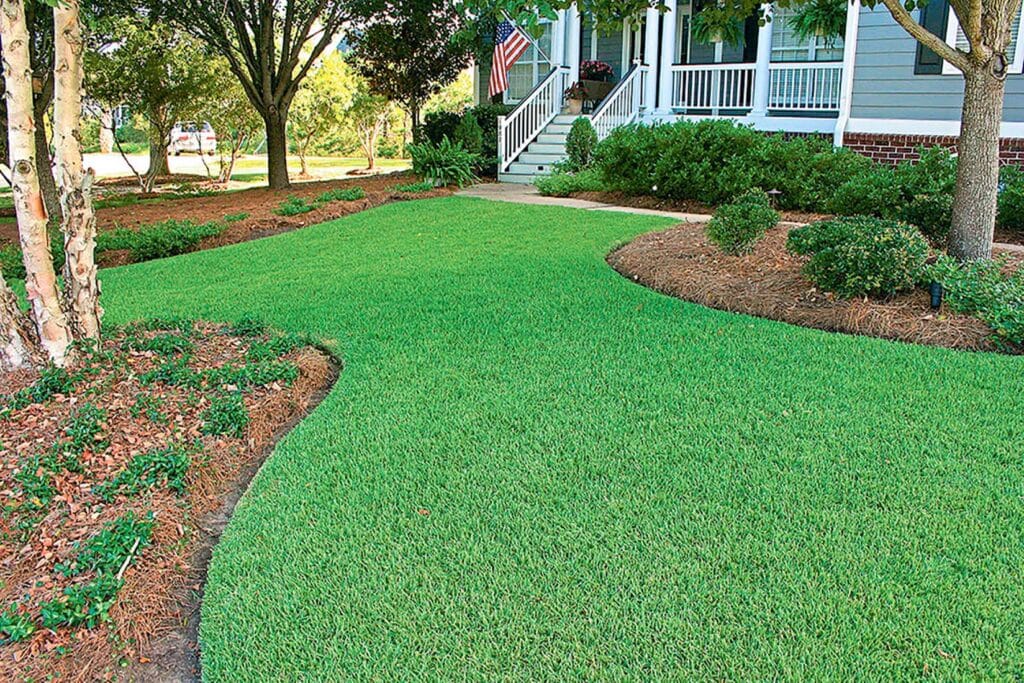Many homeowners dream of having a verdant, lush lawn as the centerpiece of their outdoor space. However, the conventional methods to attain this often involve harsh chemicals that can be detrimental to the environment and the local ecosystem.
Luckily, numerous sustainable and eco-friendly methodologies can help you achieve a green, thriving lawn without resorting to harmful substances. This guide is designed to introduce these techniques, providing a comprehensive understanding of how to maintain a green lawn in an environmentally friendly manner.
So, whether you’re a seasoned gardener or new to lawn care, read on to learn more about how you can have a beautiful green lawn without causing harm to the environment.
What are Chemicals Doing to Your Lawn?
Before delving into the methods to achieve a green lawn without chemicals, it’s essential to understand the effects that these substances have on your lawn. Chemical fertilizers, weed killers, and insecticides may seem like a quick fix for achieving a healthy-looking lawn, but they can do more harm than good in the long run.
Chemical fertilizers often contain high levels of nitrogen, which can cause excessive growth and weaken the root system of your grass. This results in a shallow root system that cannot withstand drought or other stresses, leading to a weak and unhealthy lawn.
In addition, chemical weed killers kill unwanted plants and harm beneficial organisms such as earthworms and bees. These chemicals can also seep into groundwater and contaminate local water sources, affecting aquatic life and potentially making their way into our drinking water.
Natural Lawn Care Techniques
Now that we understand the negative impact of chemicals on our lawns and the environment, let’s explore some natural lawn care techniques that can help you achieve a green lawn without using harmful substances. If you need more information on this, we suggest you visit https://heroeslawncare.com/.
- Aerate Your Lawn
Aeration involves creating small holes in your lawn to allow air, water, and nutrients to reach the grass’s root system. This helps to promote healthy root growth and prevents soil compaction. You can use a core aerator or a hand-held aerator for smaller lawns.
2. Use Organic Fertilizers
Instead of chemical fertilizers, opt for organic alternatives such as compost, manure, or grass clippings. These natural fertilizers provide essential nutrients to your lawn, improve soil health, and promote the growth of beneficial microorganisms.
3. Practice Proper Mowing Techniques
Mowing your lawn at the correct height is crucial for its overall health. It’s recommended to mow at a height of about 2-3 inches, allowing the grass to develop a deep and robust root system. This will make your lawn more resilient to drought, pests, and diseases. You can use battery powered lawn mowers.
4. Embrace Natural Weed Control Methods
Rather than using chemical weed killers, adopt natural methods such as hand pulling or using organic weed control products. You can also prevent weeds from spreading by maintaining a healthy and dense lawn through proper watering, fertilizing, and mowing techniques.
5. Encourage Beneficial Insects
Instead of relying on insecticides to eliminate harmful pests, try attracting beneficial insects that can naturally control pest populations in your lawn. Ladybugs, lacewings, and ground beetles are just a few examples of beneficial insects that can help keep your lawn healthy.
6. Plant Native Grass, Flowers, and Shrubs
Planting native grass, flowers, and shrubs can greatly benefit your lawn and the local ecosystem. Native plants are more adapted to the local climate and soil conditions, making them easier to maintain and more resilient to pests and diseases.
7. Water Wisely
Proper watering is essential for maintaining a green lawn without using chemicals. Water deeply and infrequently, allowing the soil to dry out in between waterings. This will encourage deep root growth and make your lawn more drought-resistant.
Why Maintenance is Key
Maintaining a green lawn without chemicals requires consistent effort and dedication. Regularly practicing the techniques mentioned above is crucial to the long-term health of your lawn. It’s also important to remember that a healthy lawn may not look perfect at all times, but it will ultimately be more resilient and sustainable in the long run.
How a Green Lawn Adds Value to Your Home
Aside from the environmental benefits of maintaining a green lawn without chemicals, it can also add significant value to your home. A lush, well-maintained lawn is visually appealing and signals to potential buyers that the property is well-cared for and in good condition.
In addition, a healthy lawn can help regulate temperature and improve air quality in your outdoor space, making it a more enjoyable and inviting area for you and your family to spend time in.
Conclusion
Achieving a green lawn without harmful chemicals may require extra effort and patience, but it’s worth it for the sake of our environment and our health.
By implementing sustainable techniques like proper mowing, natural weed control, and encouraging beneficial insects, we can have a beautiful lawn and contribute to a healthier planet. So, let’s all do our part in creating and maintaining green lawns without harmful chemicals.








